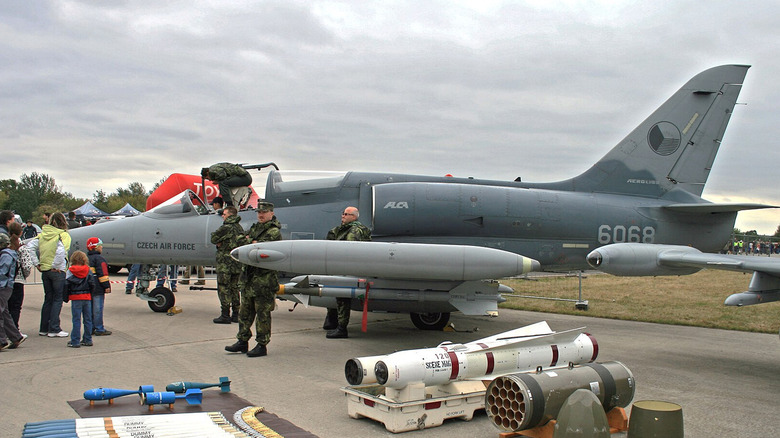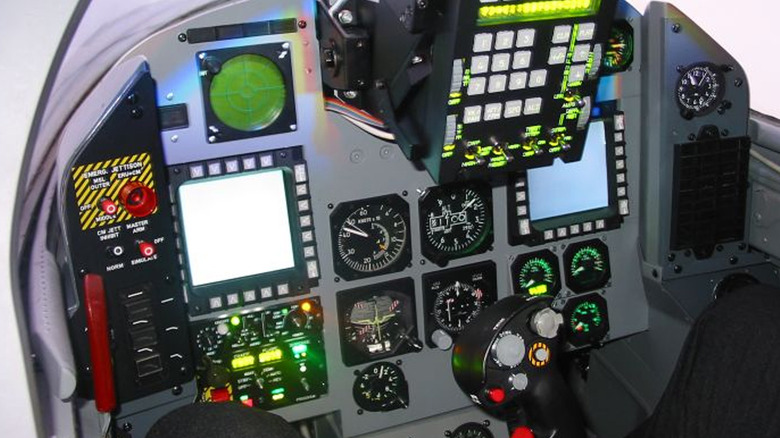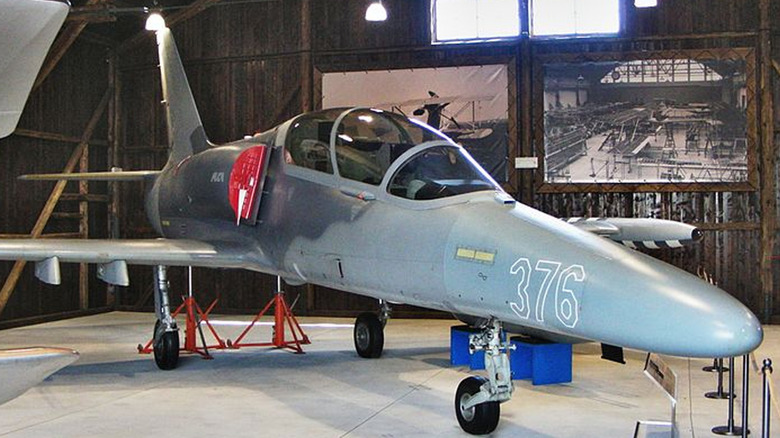Everything You Should Know About The Aero L-159 ALCA Jet
When the Czech Air Force was looking for a plane to meet the criteria for a multi-role combat craft, Aero Vodochody — a Czech aircraft company — came up with the Aero L-159 ALCA Jet. While air combat was part of its repertoire — ALCA stands for Advanced Light Combat Aircraft — the L-159 was mainly designed for reconnaissance and air support to ground troops instead of intense dogfights. The prototype first launched in August 1997, and while it got its start as a member of the Czech airforce it eventually found its way to other nations.
Aero Vodochody was owned in part by both the Czech Government and Boeing, but Boeing pulled out, leading to the company being privatized and sold off. The company still exists today and manufactures aircraft. By 2004, the number of L-159 jets in service was announced to be dropped from 47 to just 18; with six being in reserve, and the remainder being sold to other countries. However, production of the craft has since started again as part of new variants in 2017.
[Featured image by Karalj via Wikipedia Commons | Cropped and scaled | Public Domain]
What can the L-159 do?
This is a jet that wears many hats, and the L-159 can take part in air support, tactical reconnaissance, anti-ship missions, weapon training, along with a variety of other tasks. Depending on the mission, the jet can be equipped with different equipment such as devices used for recon and electronic warfare.
The L-159 shines with its reconnaissance capabilities, and there's a big reason for that. It can fly for 1,570 km (nearly 1,000 miles) without having to stop for fuel, and that is bumped up to 2,530 km (over 1,500 miles) with additional fuel tanks. On top of that, the plane could reach speeds of 936 kilometers per hour (about 581 miles per hour) at cruising speed.
While that doesn't put it in the same league as the fastest jets in the world, it's more than enough to accomplish its job. The L-159 can also be equipped with bombs, rocket launchers, and both air-to-air and air-to-ground guided missiles.
Although this is a Czech aircraft first and foremost, the United States has over 20 L-159E variants in its fleet that are used for training exercises. It's also used as part of the Iraqi Air Force for precision strikes. As recently as May 2023, the Czech Republic offered to provide Ukraine with some of its L-159 arsenal for support.
[Featured image by Yxen at Czech Wikipedia via Wikimedia Commons | Cropped and scaled | Public Domain]
The L-159 has multiple variants
When it was first manufactured, the L-159 was designed with two variants — one with a single seat and one with two seats for flight training. The one seated model ended up getting a total of three variations — the L-159A, 159E, and F/A-259. As for the two-seater, there are a total of four variants — L-159-B, 159T1, 159T1+, and 159T2.
The latter of the single-seat variant — the F/A-259 — was unveiled in 2018, and was built in collaboration with Israel Aerospace Industries. It's meant to replace the L-159 over time as it boasts several improvements over its predecessor, including a low-mounted wing configuration that allows for better range.
The latest of the two-seat variant, the L-159T2, joined the Czech Army in 2019 to replace the outgoing L-39ZA aircraft. The T2 variant comes with several upgrades over its previous model, notably a newly built central and forward fuselage, while the remainder of the frame is based on the original L-159 model. While the L-159 jet has been around for several decades, and even ended production at one point, it's showing no signs of slowing down as new variants are continually being developed and released.
[Featured image by CS92 via Wikimedia Commons | Cropped and scaled | CC-BY-SA-4.0]


